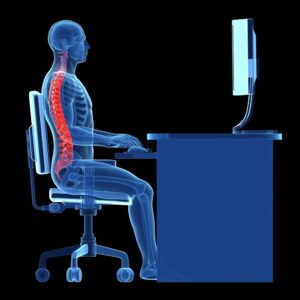Ergonomics has become a buzzword in office cultures worldwide. Supporters see ergonomics as the silver bullet for aches, pains, and productivity in the workplace. The promise is attractive: tailor your work environment to fit your physique, and you’ll work healthier and happier. Yet, my own experience and evidence gathered from various studies suggest that the reality of ergonomics is far more complex and, at times, disappointingly ineffective.
When Ergonomic Principles Fail Us
My struggle with ergonomics is personal. Although I carefully followed ergonomic guidelines, I’ve suffered just as much as those who don’t bother. This realization prompted me to question —why, with all its logical foundations, doesn’t ergonomics deliver on its promise?
Misinterpreting Our Body’s Signals
It’s easy to blame long hours or stress for that gnawing neck pain or the throbbing in your wrists, overlooking the possibility that your perfectly set ergonomic desk might be the culprit. Our symptoms often get misinterpreted, and the ergonomic setups we trust might not address the root cause of our discomfort.

Ergonomics and Neck Pain
The Problem of One-Size-Fits-All
Ergonomics generally operates under a one-size-fits-all theory, but here lies a critical flaw. Because there are so many individual variations, standard ergonomic solutions often fall short. Our bodies, habits, and preferences are unique, so our approach to creating a healthy workspace should also be.
The Nuances of Work Tasks
The complexity of specific jobs can make ergonomic principles doubtful. Some tasks demand movements or postures that no ergonomic guideline has accounted for. Work environments are varied and complex, and focusing solely on ergonomics can be like wearing blinders, ignoring the complicated nature of human tasks.

Spinal Alignment Using Ergonomics
Implementation of Ergonomics Isn’t Everything
Following ergonomic guidelines is important, but it’s no cure-all. I’ve seen first-hand how strict implementation doesn’t prevent injuries or illnesses. It’s not just about setting up an ergonomically correct workstation; it’s about how you use ergonomics and your actions beyond the desk.
.Productivity at Risk
Productivity suffers in the face of poor ergonomics. If left unchecked by inadequate ergonomic setups, muscle discomfort can lead to larger health issues, which clearly impacts work efficiency. Additionally, when comfort is compromised, so too is the quality and focus of our work.

Change positions often.
The Alternative Path to Ergonomics: Counterbalance and Adaptability
What should we do if traditional ergonomics aren’t the answer? Considering what our body goes through during the day provides a start. For instance, after hours of sitting with hunched shoulders and a downward gaze, try laying on your stomach in the evening, propped up on your elbows. This simple pose reverses the day’s harmful postures, opens your shoulders, and encourages a natural arch in your back.
Change your position frequently when sitting. Our bodies aren’t designed for stagnation. Consider including regular movement to counteract the inactive positions that ergonomics tries to perfect but sometimes cannot accommodate.
Beyond Ergonomics – A Holistic View
This blog is not a dismissal of ergonomics as a whole but a call to recognize its limitations and adapt it to fit individual needs. A successful approach to workplace well-being must be as dynamic and many-sided as the people it intends to help. It should include the environment and the needs of each human body.
Incorporating frequent movement, mindfulness of posture throughout the day, and exercises that counteract work-induced strain can complement the ergonomic framework and lead to healthier, more sustainable work habits. Ergonomics may not be the standalone solution we once thought. However, it still holds value as part of a broader, more personalized strategy. It’s about finding balance, adapting, and listening to your body’s needs. Your health, happiness, and productivity depend on it. To learn more about your body’s needs, book a functional movement assessment with one of Newleaf’s physiotherapists here.
By: DeVera Nybo, MBA

DeVera Nybo, CEO/Owner Newleaf Total Wellness Centre
